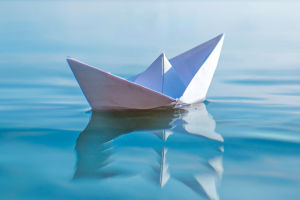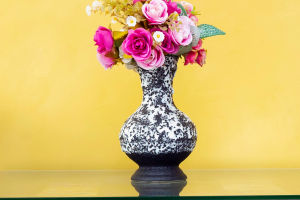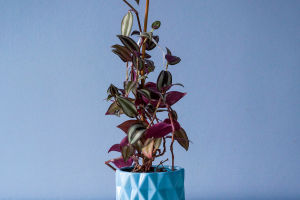In the realm of floral décor, choices extend beyond freshly cut blooms.
Preserved, dried, and artificial flowers offer alternatives that cater to different needs and preferences.
Each type comes with its own unique set of advantages and disadvantages, shaping their suitability for various occasions and settings.
Preserved Flowers: A Glimpse of Eternity
Preserved flowers undergo a meticulous process that retains their natural appearance for an extended period of time. This technique involves replacing the plant's sap with a preservation solution and maintaining its texture, shape, and color. Here's a breakdown of the pros and cons:
Advantages:
1. Longevity: Preserved flowers can last for months or even years with proper care, making them ideal for long-term displays or special occasions.
2. Natural Appearance: Unlike artificial flowers, preserved blooms maintain their organic texture and color, offering a lifelike appearance that closely resembles fresh flowers.
3. Low Maintenance: Once preserved, these flowers require minimal upkeep. They do not need watering or exposure to sunlight, making them suitable for environments where maintaining live plants is challenging.
4. Eco-Friendly: Preserving flowers reduces waste by extending their lifespan. It also minimizes the need for frequent floral replacements, contributing to sustainability efforts.
Disadvantages:
1. Cost: Preserved flowers are often more expensive than fresh or artificial alternatives due to the intricate preservation process.
2. Fragility: Despite their longevity, preserved flowers can still be delicate and prone to damage if mishandled.
3. Limited Variety: Not all flower types are suitable for preservation, limiting the available options compared to fresh flowers.
4. Sensitivity to Environment: Preserved flowers are sensitive to humidity and temperature changes, which can affect their appearance over time.
Dried Flowers: A Vintage Charm
Dried flowers have been cherished for centuries for their timeless appeal. This preservation method involves air-drying flowers naturally or using desiccants to remove moisture. Let's explore their advantages and disadvantages:
Advantages:
1. Longevity: Like preserved flowers, dried blooms can last for an extended period, making them suitable for long-lasting decorations.
2. Vintage Aesthetic: Dried flowers exude a rustic and nostalgic charm, adding character to any décor or arrangement.
3. Versatility: Dried flowers can be easily incorporated into various crafts, including wreaths, potpourri, and arrangements, offering endless creative possibilities.
4. Economical: Compared to preserved or fresh flowers, dried blooms are often more affordable, making them an attractive option for budget-conscious individuals.
Disadvantages:
1. Fragility: Dried flowers are delicate and can crumble or lose petals if handled roughly.
2. Limited Color Range: The drying process can cause some color fading, limiting the vibrancy of the flowers compared to their fresh or preserved counterparts.
3. Brittleness: Over time, dried flowers may become brittle, especially in dry environments, leading to potential breakage.
4. Susceptibility to Pests: Dried flowers may attract pests such as mites or moths if not stored properly, leading to potential damage.
Artificial Flowers: Endless Replication
Artificial flowers offer a maintenance-free alternative to fresh blooms, providing everlasting beauty. Crafted from various materials, such as silk, plastic, or fabric, artificial flowers mimic the appearance of real blooms. Let's examine their pros and cons:
Advantages:
1. Perpetual Bloom: Artificial flowers maintain their appearance indefinitely, unaffected by seasonal changes or environmental factors.
2. Wide Variety: Artificial flowers offer an extensive range of colors, shapes, and sizes, allowing for customization to suit any décor or theme.
3. Durable: Unlike fresh or preserved flowers, artificial blooms are resistant to wilting, fading, and damage, making them suitable for high-traffic areas or outdoor use.
4. Cost-Effective: While high-quality artificial flowers can be pricey, they offer long-term savings compared to frequent purchases of fresh flowers.
Disadvantages:
1. Lack of Authenticity: Despite advancements in manufacturing, artificial flowers may still lack the natural beauty and fragrance of real blooms, diminishing the overall sensory experience.
2. Environmental Impact: Most artificial flowers are made from non-biodegradable materials, contributing to environmental waste and pollution.
3. Maintenance Required: While artificial flowers do not require watering, they may accumulate dust over time, necessitating regular cleaning to maintain their appearance.
4. Limited Realism: While some artificial flowers closely resemble their real counterparts, others may appear noticeably artificial upon closer inspection, detracting from their visual appeal.
The choice between preserved, dried, and artificial flowers depends on individual preferences, budget constraints, and intended use. While each option offers distinct advantages and disadvantages, they all contribute to the vibrant world of floral design, allowing for endless creativity and expression in decorating spaces and commemorating special occasions.


